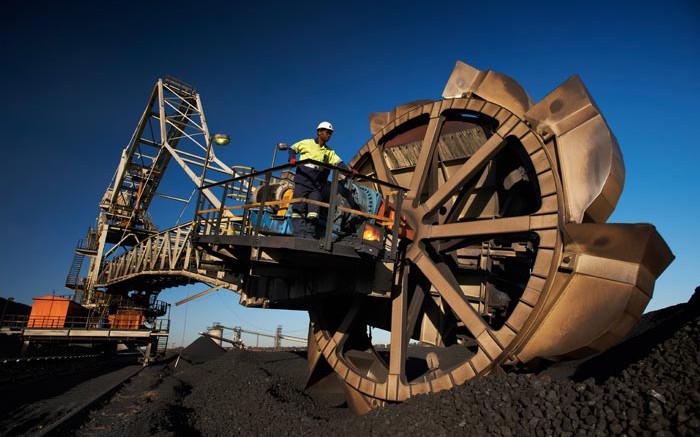A week before the United Nations Climate Summit kicked off in New York, China’s National Development and Reform Commission (NDRC) released a directive on coal stating that the country would restrict imports of low-quality coal in certain parts of the country from Jan. 1, 2015, to help combat air pollution.
Under the policy document, China would apparently ban coal use exceeding 16% ash and 1% sulphur in the densely populated northern cities of Beijing, Tianjin and Hebei, as well as in major metropolitan areas in the eastern Yangtze River basin and the southern Pearl River delta.
The directive also specified that coal moved more than 600 km from its production site or receiving port must meet a minimum energy requirement of 3,940 kcal per kg, with a maximum 20% ash content and 1% sulphur content.
Confusion about the policy and its impact lingers, however, with reports from Reuters — quoting sources from large power companies — saying that the ban would not apply to China’s large power plants.
But if it does include power plants, Business Monitor International (BMI), an independent analysis and forecasting company specializing in emerging markets, argues in a report released on Sept. 18 that the ban’s environmental impact would be limited.
“Coal-fired power plants will have to consume more lower-energy coal from Indonesia (which despite its lower calorific value, will not be affected by the ban due to its lower ash content) in order to generate the same amount of electricity,” BMI says.
The consulting group says that an average power plant consumes as much as 40% more coal if it uses 3,700 kcal per kg fuel versus 5,500 to 6,000 kcal per kg. “As the sulphur content of Indonesian coal is similar to that of other sources, such as Australia, the subsequent increase in sulphur dioxide emission from greater coal burning will partly negate the environmental benefit of a reduction in ash pollution,” BMI says. “A more aggressive way to tame coal pollution would be to implement a ban on coal imports, with low calorific value at the same time.”
BMI forecasts that China will depend on seaborne coal and coal-fired power generation over the next decade, and expects the share of coal in the country’s energy mix will fall to 70.8% in 2023, from 76.8% in 2013.
China has limited alternatives to burning coal because it has limited natural gas output and expensive imports of liquefied natural gas, BMI reasons, but Chinese authorities are simply shifting the building of coal-fired power plants further inland and away from the coast. In addition, if the ban puts domestic coal miners out of business, China’s demand for imported coal will only grow, which reinforces BMI’s view that “China will remain the key driver of seaborne coal demand over our forecast period to 2018.”
In terms of which countries could be winners and losers if the ban is put in practice, BMI believes that Indonesia would emerge the biggest winner, while Australia and South Africa would be hit the worst.
Indonesia would benefit because “the bulk of Indonesian coal exports are of ash content of 5–7% and sulphur content of less than 1%.” Other winners could be Russia (the two countries are building a natural gas pipeline) and Colombia, which “is home to rich coal reserves, with a 7% ash content and 0.7% sulphur content.”
Australia and South Africa, however, will have a tougher time to meet the new regulations, BMI says.
“Thermal coal with a heating value of 5,500 kcal per kg from these two countries will be worst-hit, since their ash content generally hovers at 23–25%, far exceeding the 16% limit,” the forecasting group says. It estimates that between 50% and 80% of Australia’s coal exports would be affected, “putting at risk 30 million to 45 million tonnes of coal volumes.”
According to BMI, the largest operations in Australia that would not meet the requirements include BHP Billiton’s (NYSE: BHP) Mount Arthur mine, Glencore’s (LSE: GLEN) Mangoola mine and Rio Tinto’s (NYSE: RIO; LSE: RIO) Hunter Valley project.
“Admittedly, Australian coal miners could sidestep the ban by washing and blending their coal before exporting,” BMI says. “However, the slump in thermal coal prices, currently trading at a five-year low of US$65 per tonne, will undermine the economic viability of such a practice.”
But the Minerals Council of Australia disputes that view, saying in a Sept. 17 press release that “reports on draft new guidelines for China’s coal use and their impact on Australia’s coal industry are misleading and unnecessarily alarmist … there is nothing in the information which suggests that Australian coal exporters will be disadvantaged, and we are confident that we can meet the proposed specifications.”
The industry group also said that Australia “is fortunate to have reserves of high-quality black coal, which will continue to be in strong demand from established and emerging markets, including China. The main impact of this development in China appears to be on brown coal — or ‘lignite,’ which Australia does not export — and low-quality domestic black coal. To the extent it impacts imports of black coal destined for northern cities this relates to small-scale coal use, not large-scale power plants, or other industry users.”


Be the first to comment on "China moves to restrict imports of low-quality coal"